Hi Again,
Thanks for the welcomes and encouraging letters.
I did see two segments on back to back Carol Duval Shows today, and the first one really did look easy. With no disrespect to the illustrator, it was a real good beginner project.
I will post directions , but to see pics, go to the URL I will provide.
Pasta Machine Question ?
The old--where, how much, and what kind?
I don't live in a rural town, so I have access to a lot of stores, and would prefer to save S & H.
Here are the directions to two projects.
Cece
This page was found in the Crafts & Collectibles category, located at:
http://http://www.hgtv.com/HGTV/project/0,1158,CRHO_project_27250,FF.html Necklace
Project designed by Vesta Abel.
Materials:
soft, black polymer clay
Veggie Leather re\-heatable foam
Arthur Baker Calligraphy fish stamp
heat tool
copper, verdigris, Decor\-It inks
five jump rings
various charms
30\-inch chain
makeup sponge
brayer
stylus
needle nose pliers
scrap paper
Steps:
1\. Heat the center of the foam sheet with the heat tool until soft.
2\. Quickly stamp the fish design onto the softened foam (figure A).
3\. Roll a small piece of black polymer clay until it is soft and smooth.
4\. Flatten the clay and place it over fish image on the stamp.
5\. Roll a brayer over the clay to force it down into the design.
6\. Carefully peel up the clay off of the stamp. Using a stylus, poke a hole on both sides of the top of the necklace (figure B).
7\. Bake the clay piece according to the manufacturer's directions. Let cool.
8\. Squeeze a small amount of verdigris ink onto a piece of scrap paper. Using a makeup sponge, lightly rub the ink across the design. Repeat with copper ink (figure C).
9\. Attach a chain and charms with jump rings using needle nose pliers (figure D).
Tips:
When applying inks with makeup sponges, be careful not to press too hard on the design.
This technique looks best when using dark colored clays and metallic inks
This page was found in the Crafts & Collectibles category, located at:
http://http://www.hgtv.com/HGTV/project/0,1158,CRHO_project_27256,FF.html Cloisonne
Project designed by Ann and Karen Mitchell, AnKara Designs.
Project demonstrated by Karen Mitchell.
Materials:
six, two-ounce blocks of Premo polymer clay - black
two-ounce bottle of translucent Liquid Sculpey
standard size pasta maker
tissue blade
X-Acto knife
ruler
one roll decorative craft foil - gold or turquoise
scissors - preferably old
paper crimper
needle nose pliers
Pearl-Ex mica pigment powders - pearl white, sparkle gold, duo blue-green, red russet
four small glass or metal dishes
Sculpey diluent
wooden skewers
soft leather strip, 5-1/2" x 1-1/2"
general craft or fabric adhesive
leather lacing
5" x 7", two-hole photo pages
wax paper
FIMO gloss varnish
brush
brush cleaner
paper towels
pointed (but not sharp) wooden clay tool or dull pencil
sketched design for cover
Steps:
1. Condition clay until soft. Roll out and cut two 5-1/2" x 8-3/4" sheets of black clay at a #1 setting on the pasta machine (about 1/8 inch thick). Using photo pages as a guide, mark and cut out holes for lacing on both sheets. Bake one sheet, cooling on a flat surface, and set aside. On second sheet, mark fold line of photo pages, cut clay sheet along this line, and cut out a 1/8-inch strip (1/16 inch on either side of marked line) to allow room for hinge action of the cover ( figure A).
2. Cut about 20-1/2" x 12" strips of foil. Fold strips in half lengthwise, and flatten at fold line (colored side of foil facing out). Be careful, the foil is sharp. Trim folded strips to a width of 1/8 inch. The folded and trimmed strips can be prepared for decorating the project in two ways. Some strips can be folded at angles with the pliers to form a zigzag pattern. Other strips can be run through the paper crimper for a wavy pattern, and then formed by hand into shapes and scrolls (figure B).
3. Use a sketch of the memory book cover design as a guide. Place the paper with the design on top of the unbaked sheet of clay. Use pointed but not sharp wooden clay tool to follow lines of the design, leaving a light impression on the clay. Start to form shapes and scrolls with the strips of foil, and place it on the surface of the clay sheet prepared as the front cover of the memory book, following the etched surface design (figure C). Trim strips as necessary. Press formed strips into the clay with the cut edge of the foil towards the surface of the clay, and the folded side facing up. Sink the strips about half of their width into the clay. Make sure to form closed shapes, as you will be filling the shapes later with liquid clay. When all the strips are in place and pressed into the clay, bake on a flat surface, and cool under a book (figure D).
4. Squeeze about 1-1/2 tablespoons of liquid clay into each of four small dishes. Choose four colors of mica pigment powders and mix one color into each of the dishes. Add a few drops of Sculpey diluent to each dish to thin the mixture. Plan the color layout for the cover, and carefully drop (using a skewer) small amounts of each color into the foil shapes but don't fill all the way to the top edge of the foil. Be careful not to spill into the next section marked off by the foil edge, or the colors could mix. Use the pointed end of a wooden skewer to drag the liquid clay in each foil section all the way to the edges (figure E). Bake book cover when all colored sections are filled with the liquid clay (figure F).
5. After coloring on cover is baked and has cooled, varnish the entire surface, as well as the hinge section of the cover. Trim leather strip to a 5-1/2" x 1-1 /2" strip. Using the fabric or craft adhesive, glue the leather strip to the backside of the cover and the hinge, leaving a 1/8-inch gap between the clay hinge and cover. Make sure strip dries flat to the surface of the clay (figure G).
6. Align the holes of the back cover, photo pages and front cover then tie together with the leather strip to finish.
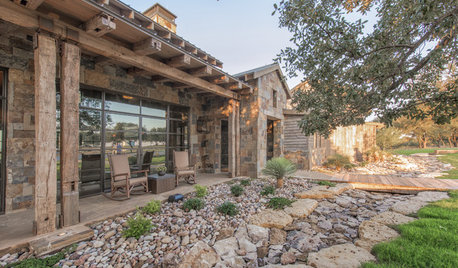


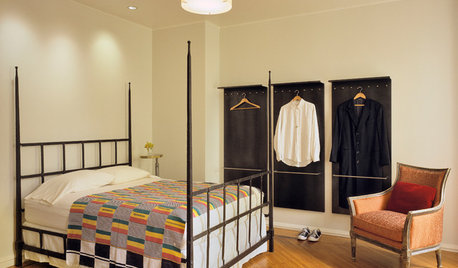
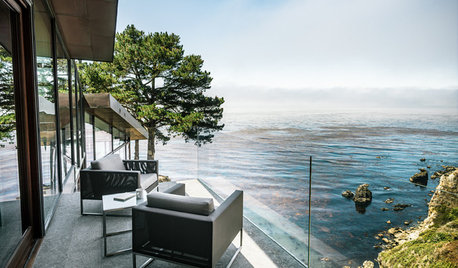
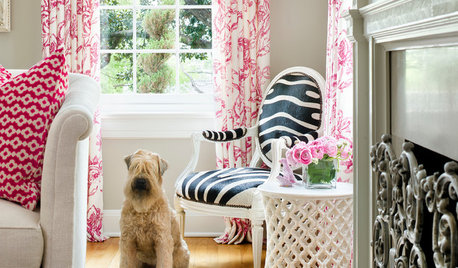
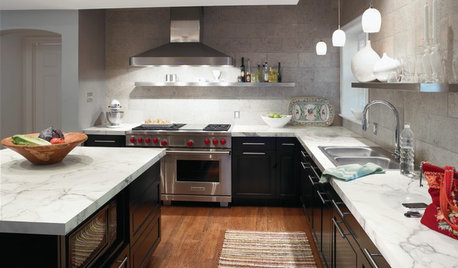

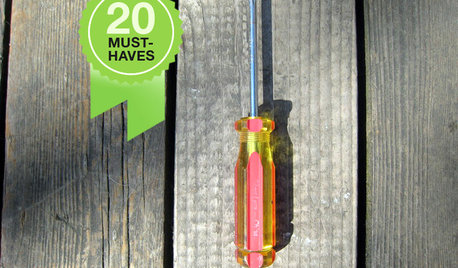







ArtsyCraftsy
rosie_ga
Related Professionals
Cedar Rapids Furniture & Accessories · Rochester Furniture & Accessories · West Palm Beach Furniture & Accessories · Newton Furniture & Accessories · Port Chester Furniture & Accessories · Stamford Furniture & Accessories · Temple Terrace Furniture & Accessories · Carson Furniture & Accessories · Tamalpais-Homestead Valley Furniture & Accessories · Aspen Hill Interior Designers & Decorators · Morton Grove Interior Designers & Decorators · Brooklyn Park Home Stagers · Ken Caryl Home Stagers · The Hammocks Home Stagers · Wailuku Home Stagers